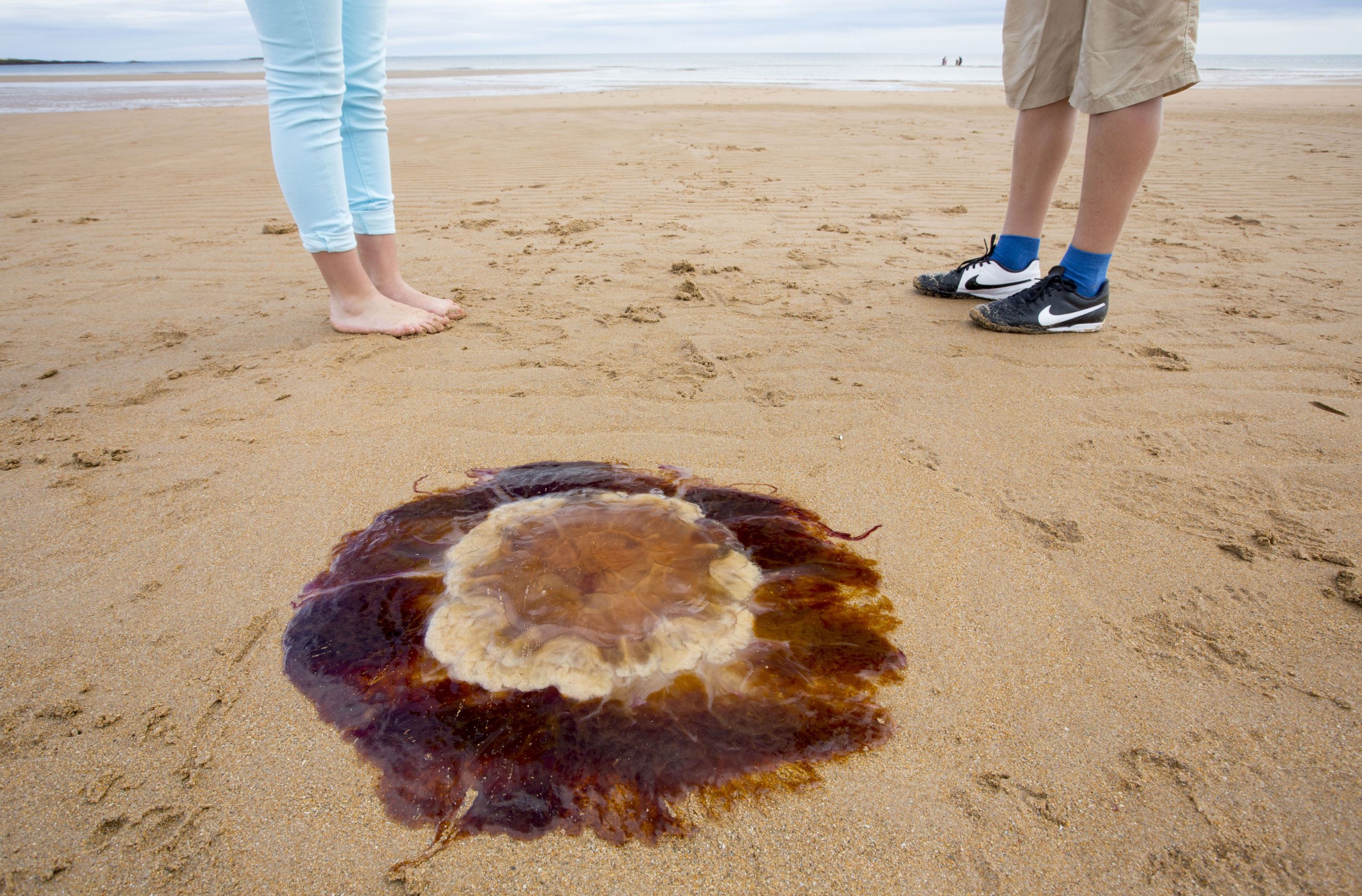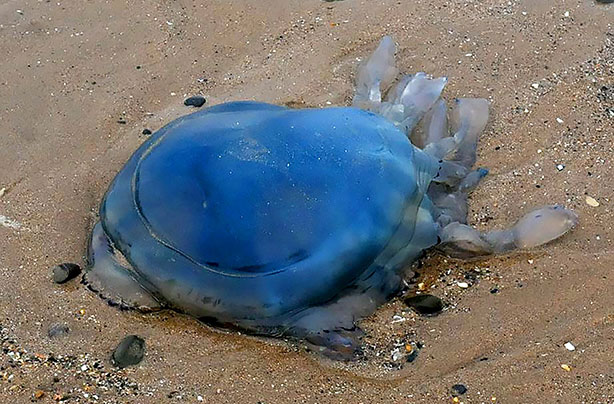UK warned of Jellyfish invasion at British beaches as heatwave continues
The public have been warned to be extra vigilant at beaches around the country as the heatwave brings swarms of jellyfish to our shores.

The public have been warned to be extra vigilant at beaches around the country as the heatwave brings swarms of jellyfish to our shores.
Sightings of the sea creatures have risen dramatically as the temperature continues to rise in the UK – and while many are no stranger to British waters, there is one to watch out for…
The lion’s mane jellyfish has been spotted at several beaches around the country as the warmer waters have become a more attractive location for the animal, which has the most severe sting of any of its species in the UK.
They are the largest species of their kind and can grow up to 90 cm wide and weigh as much as 25 kg, with their sting often leaving victims hospitalised.
Dr Peter Richardson, head of ocean recovery at the Marine Conservation Society, said of the invasion: ‘Our national survey suggests significant recent rises in the numbers of some jellyfish species in UK seas, most notably the barrel jellyfish.
‘The million-dollar question is why this is happening? At the moment we just don't know.’
The lion’s mane jellyfish has been spotted in Blackpool, Anglesey and Hythe in Kent, while hundreds of barrel jellyfish were seen in Weymouth, Dorset, last week.
Parenting advice, hot topics, best buys and family finance tips delivered straight to your inbox.
There have even been sightings in Galway, Ireland, with three people taken to hospital after they were stung by lion’s manes during a spell of hot weather last month.
Jellyfish tend to be found in warm, shallow waters close to beaches, however most species found in the UK can only deliver a mild sting.
But experts recommend vacating the water as soon as possible if you spot a large number, known as blooms, of jellyfish together.
If you do find yourself on the receiving end of a jellyfish sting though, there are ways to help relieve the pain, and peeing on the sting isn’t one of them.
How to treat a jellyfish sting

According to Christie Wilcox, a venom scientist at the University of Hawai‘i, and co-author of two studies on jellyfish sting treatment, there are three steps you should follow after exiting the water.
1. Douse the area with vinegar, to rinse away the tentacles and deactivate the stinging cells. If you do this first, you won’t spread the sting to other areas when you attempt to remove the tentacles.
2. Pluck off the tentacles with tweezers. Scraping them off or rubbing with sand (another recommended approach) triggers any active stingers to release more venom, so you want to delicately lift the tentacles off the skin.
3. Apply heat.
A Freelance Writer and Content Editor, Jenni has been working on the women's lifestyle team at TI-Media on and off for over three years. She writes about your favourite celebrities and TV shows so you never miss an update. Jenni also writes beauty news and features - so for all of your skincare and make-up needs, drop her a line.